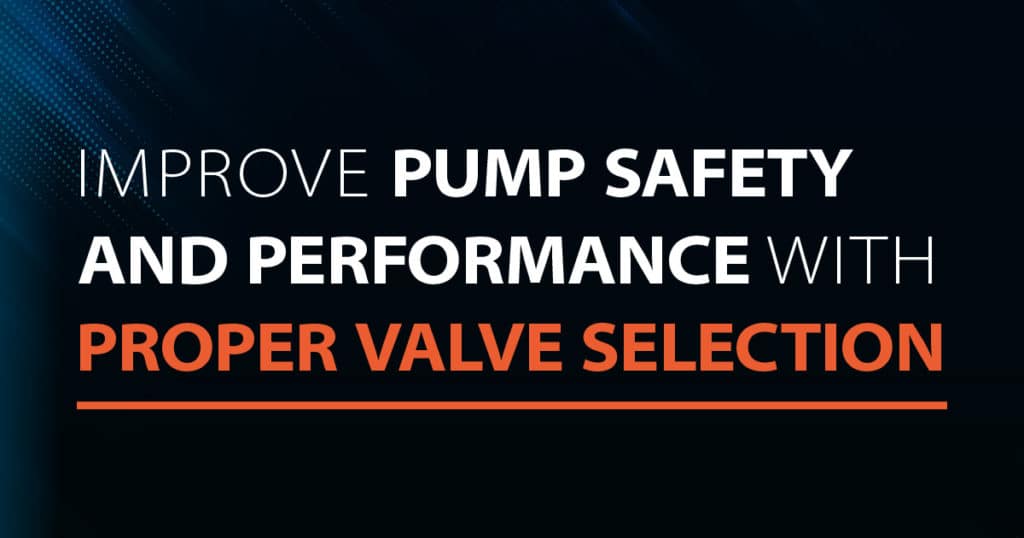Maintaining a thriving pump operation is an impossible task if proper valve selection is falling by the wayside. The wrong valve can significantly hinder pump performance and cause serious safety concerns, including breaks, flooding, loss of suction, air pockets, and much more.
Proper valve selection is one small step that’ll get your operation closer to complete pump safety.
Key Valve Selection Considerations
When selecting the proper valve for your pump system, what features are essential to look at? Proper type and valve size, application, pressure ranges, corrosiveness of fluids, operating speed(s) and desired energy efficiency are all worthy considerations. Each of these technical parameters should be determined when you are designing your pump station.
Surge Pressure
To get a handle on surge pressure, you’ll calculate the maximum surge pressure potential and surge period, line velocity, surge wave speed, total system head, and pipeline constant. To reduce surge pressure concerns, utilize all the technical parameters. This will be key in properly selecting and installing check valves, surge relief valves, isolation, valves, air valves, and pump control valves.
Types of Pump Valves
It pays to understand the function of each valve type, as they are all designed for specific purposes within the pump system. Here are the standard valves to research:
- Pump Control Valve—Will close to prevent reverse flow when the pump is turned off, though it can be opened during operation at a controlled rate of speed. When functioning properly, it will gradually accelerate the fluid and reduce the risks of pressure surges and backflow.
- Check Valve—A check valve will close to prevent backflow for clean and dirty applications. There are many different types of check valves (internal spring, external spring, external lever, bottom buffer, oil control, air cushion, and lever and weight). Naturally, you want to select and install the proper type and size of check valve.
- Surge Relieve Valve—These are generally located on the pump discharge header, downstream past the check and pump control valves. They are designed to open quickly if the system pressure rises above the relief-pressure setting, allowing fluid to be discharged from the system in a controlled manner to a separate contained location. The valve should close slowly as surge pressure reduces and the pump returns its standard pressure rate.
- Air Valve—Also known as an air release valve, this valve is designed to eliminate small air pockets that can form at high points. Air pockets will restrict fluid flow and can cause cavitation. The air valve releases significant amounts of air in the pipeline to relieve the vacuum as needed.
- Isolation Valve—There are generally three categories of isolation valves: plug, butterfly, and knife gate. Flow requirements, fluid type, temperature, and pressure are all factors that should go into selecting the best isolation valve. It will be located after the pump control and/or check valve for better maintenance control.
When you have questions about valves and need help selecting, configuring, and installing the proper valve solution for your unique pump system, contact DXP Pacific. Let our pump experts help you find the right equipment for improved pump performance and safety.

